 |
| Northern Gannet adult |
I spent 12 hours in a
boat on the Atlantic Ocean, far from the Florida shore, doing what is called
“pelagic birding.” (It's just a fancy word meaning we're out far, far from shore.) The cruise was the
final field trip for the Space Coast Birding and Nature Festival, and was the
perfect way for me to close my Florida adventure before starting the long drive
home.
It was possible I could add a bird or two to my lifelist on
this trip, and I’m always excited about that possibility, but the Atlantic
Ocean is vast and even with 110 pairs of eyes looking every which way, it’s
easy to miss birds. So I went out open to anything, with only one actual
goal—to take at least one or two good photos of the Northern Gannet, a bird I
figured we couldn’t possibly miss.
 |
| Northern Gannet |
Gannets belong to the family Sulidae, along with boobies. Boobies
nest in southern seas, but gannets breed on rocky cliffs in the North Atlantic, where they are the largest breeding seabird. Two thirds of the world’s gannets
nest in the U.K., mostly in Scotland. The rest breed mostly off Canada,
Ireland, the Faroe Islands, and Iceland.
Gannets breed far from the Florida coast, but a great many migrate here
in winter, and young birds remain on the Atlantic off Florida and in the Gulf
of Mexico for two or more years before returning north to begin breeding.
The gannet is quite abundant still, so is not listed as a
bird of conservation concern, but I consider it one, because the way we’re
trashing the ocean is making all ocean life so vulnerable. On our cruise,
although my eyes were mostly focused all about searching for birds, I did spot
three bits of plastic trash floating about.
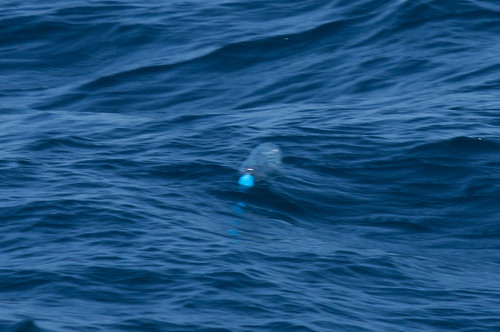 |
| Yuck |
We also saw two container ships. Most boats are far, far more polluting than automobiles, but we don’t seem to
worry about boating and ship pollution at all. We cleaned up auto emissions
after it became clear that lead in the air we breathe was hurting humans, but
we don’t seem to care what we put into salt water. Container ships are
especially polluting because they burn bunker fuel—the filthy sludge left over
from crude oil after gasoline, propane, and kerosene have been refined out.
Every article we purchase from China is cheaper than what we can manufacture in
America not only because labor is so cheap and there are few environmental
controls to require companies to minimize pollution, but also because we can
transport those items to America so cheaply via these horrifically polluting
vessels. And because all countries share the ocean, there’s little any country
could do to clean up the mess, even if any country wanted to, which none seem
to.
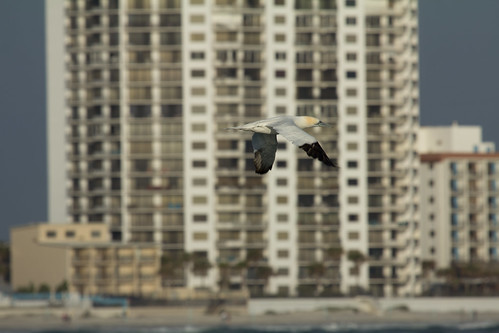 |
| It's so weird to see this bird of rocky wild islands of the North Atlantic flying so close to massive developments. But where else can they go in winter? |
The gannet was the
bird most often collected dead or badly oiled after the BP oil spill. I was
very disturbed when I attended a “media event” at one of the rehab centers
following the spill to hear the spokesman from the US Fish and Wildlife Service
explain that the reason every gannet thus far collected was an immature was a
mystery, but that apparently the adults had figured out how to avoid oil
plumes. No—the reason was that all the adults were far from the Gulf when the
spill occurred—already wending their way north to their breeding grounds. I
couldn’t believe he didn’t at least look the bird up in a field guide to figure
this out. But like everything else about the spill, the media seemed to swallow
everything BP said without questioning it.
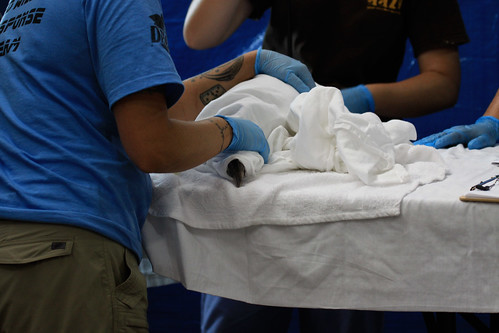 |
This poor first-year Northern Gannet had been oiled in the BP oil spill, and was being cared for at a rehab center in Alabama.
|
On my pelagic trip, I tried not to think too much about
trash and oil spills and bunker fuel and the many other ways we pollute the
ocean while I was watching gannets. They’re gorgeous in flight or swimming, and
I managed to get dozens of reasonably good photos of them. They were gathering
near the boat because the crew was “chumming”—that is, tossing out fish oil and
fish guts and popcorn out the back to lure in gulls, which often attract
curious seabirds from a distance.
 |
| Tossing out "chum" |
 |
| Gulls following the boat to gobble up "chum" |
The gannets watching this were diving from
only ten or twenty feet above the water, though when actively fishing, may dive
from as much as a hundred feet above the surface. They manage this because
their nostrils are located in their mouth rather than externally, they have air
sacs under the skin of their face and chest that act as bubble wrap to soften
the blow when they hit water, and their eyes are located forward, providing
binocular vision to accurately judge when they’ll hit. They dive so frequently
that the word “gannet” has come to refer to a glutton.
 |
| Next time I'll try to take an action shot that's in focus. |
We saw dozens of gannets at close range until we got out far
from shore—right when we started seeing sailfish and flying fish, we stopped
seeing them. I got just a couple of slightly out-of-focus photos of gannets
plunging, arrow-like, into the ocean, one of the most spectacular things they
do.
I didn’t see any of their dives from way up, though I’ve seen this at a
distance from shore—next time I set out off the coast in Florida, I’ll take a
fishing boat that sticks closer to where gannets are fishing so I can get
better photos of their dives. That’s the coolest thing about birding: even as
we try to see more birds, we enjoy seeing every little thing about the birds
we’ve already seen, too.
I'm not sure how many miles the boat traveled. My own auto mileage is now up to 2632. I added nine species for the year:
- Cory's Shearwater
- Brown Booby
- Red Phalarope
- Lesser Black-backed Gull
- Bridled Tern
- Black Tern
- Pomarine Jaeger
- Parasitic Jaeger
- Razorbill (These poor birds are also being found dead or dying along the Florida coast this year--they are probably here due to the hurricane, and somehow I didn't feel very happy seeing this one.)







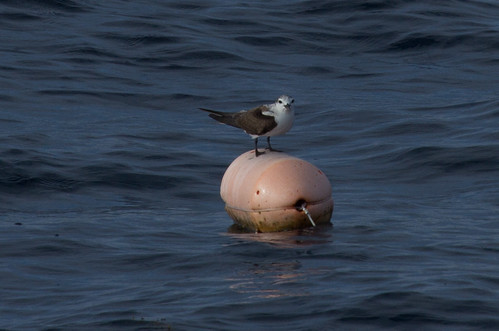
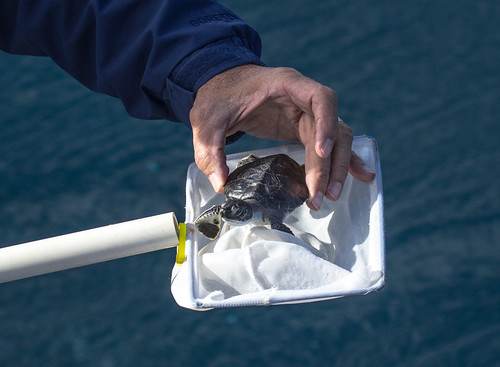
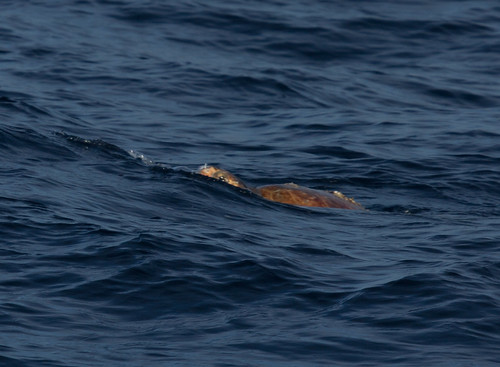


Beautiful images! I saved a couple to insert into the field guide.
ReplyDeleteHow were the seas?
I'm not bothered by seasickness. The 5-foot waves, 6-second period, did bother a few people.
ReplyDeleteHi Laura, I tracked the journey and came to a round trip of about 125 miles. http://www.poweredbybirds.com/tracking-a-pelagic-journey/ :)
ReplyDelete